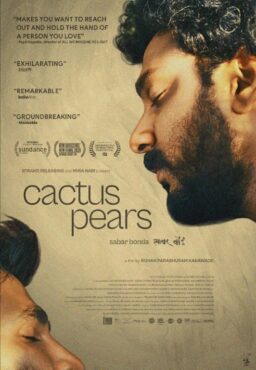I always knew Woody Allen worked close to the bone, but I never realized how close until I attended a screening of his new film, “Husbands and Wives,” at the end of a week of public controversy over his behavior as a partner, lover, father and friend.
The film, which is one of his strongest, is almost frightening in the way it seems to directly address elements of the controversy: Is it a movie or a deposition?
In the story, Allen and Mia Farrow, his longtime lover, now his bitter adversary, play a couple who have been married for about 10 years. They are shocked when their closest friends — played by Sydney Pollack and Judy Davis — reveal they are going to get a divorce. This breakup of a seemingly happy marriage calls into question the stability of their own relationship.
The movie is made in the form of a documentary, with an offscreen narrator reporting dispassionately on the two couples and what happens to them, and sometimes interviewing the key characters as they talk directly into the camera. The subject of the documentary appears to be what is often called the seven-year itch; all of the characters confess to fantasies about what it would be like to be single again, and free to choose new partners.
The plot unfolds like a chess game in which each move inspires a countermove, either offensive or defensive. After Pollack leaves his wife, he soon moves in with a bubbly young aerobics instructor (Lysette Anthony), who he defends because she is more fun and less critical than his longtime wife (“With her, I was always auditioning”). Davis is at first enraged, but soon tries a tentative affair with an art magazine editor (Liam Neeson) who is a nice guy, perhaps too nice to stand up to her abrasive personality.
The Allen and Farrow characters, meanwhile, begin to ask if their own marriage is as insubstantial as their friends’. Their dialog in these scenes is chilling in the way it seems to reflect life, as they ask each other blunt questions about trust, fidelity, sex and loyalty.
Farrow, who introduced the Neeson character to Davis, obviously has a crush on him herself. And Allen, a literature professor, fantasizes about a relationship with one of his young students (Juliette Lewis), finally kissing her on the night of her 21st birthday party, as a lightning-storm flashes behind them.
This kiss is surrounded by some of Allen’s familiar self-deprecating dialog, as he admits he has often thought about kissing her, says he knew he shouldn’t, and finally gives in to her invitation after a last desperate witticism (“A real kiss, right? Both lips at once?”). The kiss, not insignificantly, takes place in the girl’s own home, while her parents are nearby.
In his speeches to the camera, the Allen character remembers the first woman he was seriously involved with, who turned out to be mentally ill, but was more exciting for him than any woman since. When he senses the same kind of instability in a new woman, he confesses, he finds himself drawn helplessly toward it. The craziness is a turn-on, and as he flirts with Lewis in the key scene, he says, “Why do I suddenly feel $50,000 worth of psychoanalysis dialing 911?”
In the film, the kiss does not lead to a consummated love affair, because, he says, he can look forward and see where it would all lead and he chooses not to make himself that trouble. After his wife leaves him (eventially to marry Neeson herself), he envisions a period of “just work, just writing and being by myself” and then eventually another relationship. “That’s the way these things usually work out.”
In scene after scene, in one line of dialog after another, the viewer is reminded of the real-life drama of Allen’s split with Farrow and his love affair with her young adopted daughter, Soon-Yi. Some lines seem to directly comment on reality. It is impossible to know how closely “Husbands and Wives” follows real life, but the parallels seem so uncanny that the viewer is inspired, in retrospect, to look back at such other Allen confessionals as “Hannah and her Sisters,” “Another Woman” and especially “Crimes and Misdemeanors” and wonder if they were not even closer to life than they seemed at the time.
“Crimes and Misdemeanors” is a particularly thought-provoking film, dealing with a man who does something wrong, and knows it is wrong, and feels guilty and wants to confess, but is brought up short by practical considerations and the pragmatic advice of his family and friends.
Movie executives, always realistic, have been asking if the current troubles between Allen and Farrow will hurt or help the box office prospects of the film. I believe Allen and Farrow have both built up such an enormous fund of good will over the years that their admirers will be compelled to see the film, out of hurt and simple human curiosity. And, sitting in the dark, they will have the eerie feeling that they are witnesses at scenes inspired by real life at a very close remove.
Artists have often drawn their inspiration from their own lives, hopes, lusts and fears. Rarely has there been such a close correlation–in subject and timing–between reality and fiction. I left the film feeling that everyone involved in it had been honest and revealing almost to the point of pain.
Allen’s movies always feature old jazz and big band recordings on the sound track. “Husbands and Wives” begins and ends with an old record, which sounds as if it is playing on a phonograph at the other end of a large room on a quiet afternoon. The song is, “What is this Thing Called Love?”











